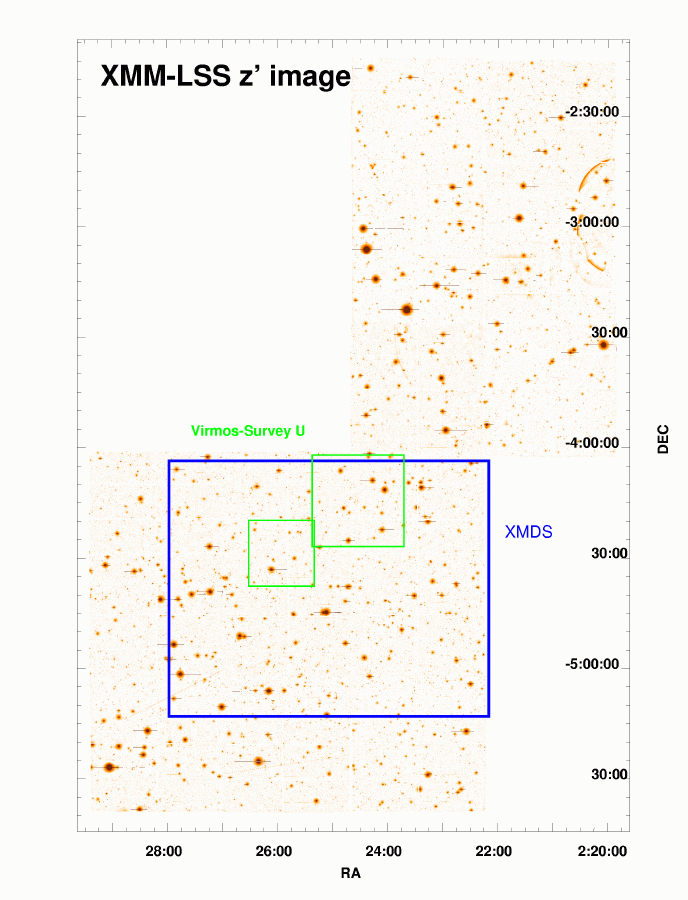 Click here for another another image
built later.
Click here for another another image
built later.Multi-
Instrument ProcessIng And Catalog Extraction
(or, I like it, in italian)
Wide-field mosaic camera are definitively useful.
But someone should reduced the data. Is it? I like it (Mi piace). Here
is a list of data reduced, totaly or in part, with MIPIACE, a suite of scripts
and programs build on previously existent software (FLIPS, Midas,
Iraf, Eclipse, whatever) that makes everything automatic (almost automatic,
to be honest).
My largest patch of sky
My largest field is this one (for the XMM-LSS project)
shown here, after an heavy rebinning (800 original pixels have been put in
one!) for display purposes. What you see is mostly background variations,
including in the background also diffuse light from foreground stars. The
shown mosaic is composed by 19 Mosaic II pointings, each of
35'x35'. The whole image is about 4dx3d wide,
is 32kx48k large, and takes 6.4 Gigabytes. Just outside the field of view,
in the upper-left, there is a very bright star, whose effects are sensible
in our field of view. Very recently I build an ever larger image. Look here.
 Click here for another another image
built later.
Click here for another another image
built later.
Mosaic II - The 8k8k camera
of the CTIO 4m telescope
| A have also somewhere an image taken with 16 amplifiers ... hence it should come here in a future ... | |
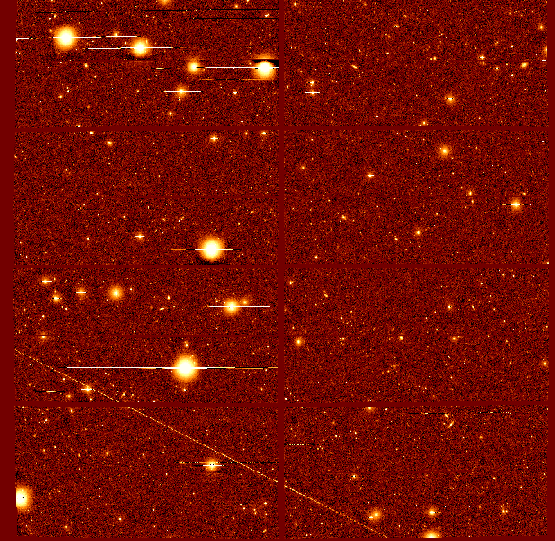
|
A random field taken with Mosaic II in z'. May you find it in the large mosaic? Suggestion: maybe the field is rotated by 90 degrees... |
LFC - The Palomar
Large Format Camera
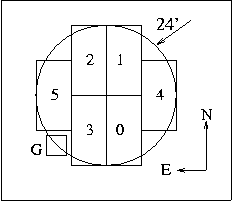
|
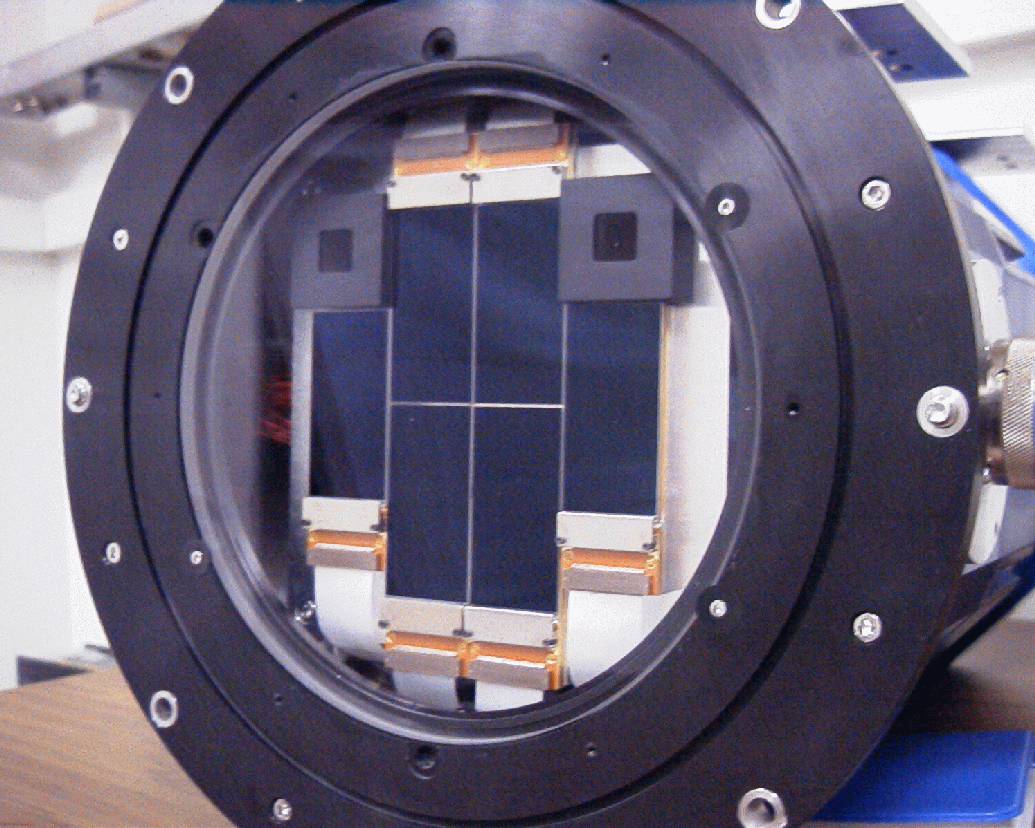
|
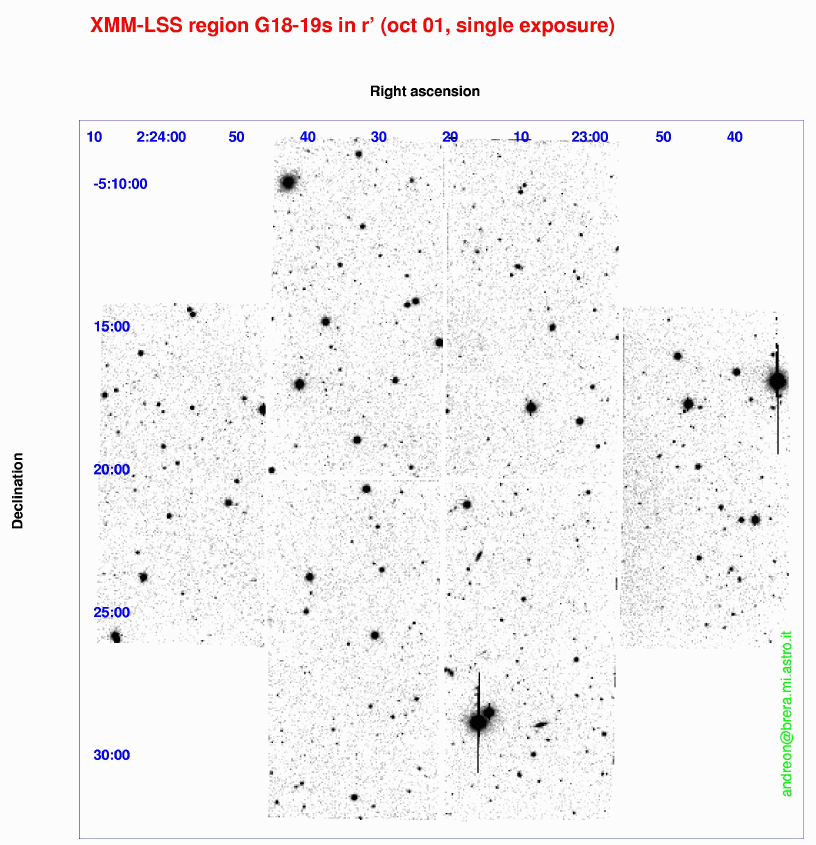
|
Click here to see a 1.5x0.8 degrees wide
image made with the LFC camera, or here to see a zoom on a 17'x17' wide region centered on the cl0024 cluster. |
CFH12K
- The CFHT 12k8k Camera
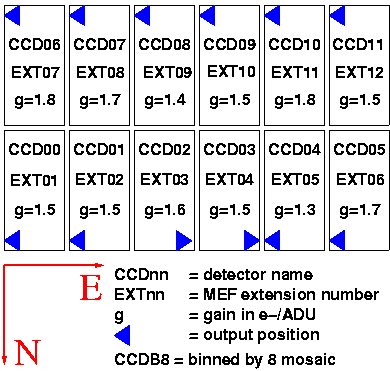
|
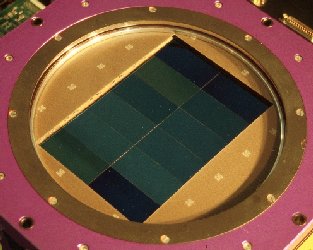
|
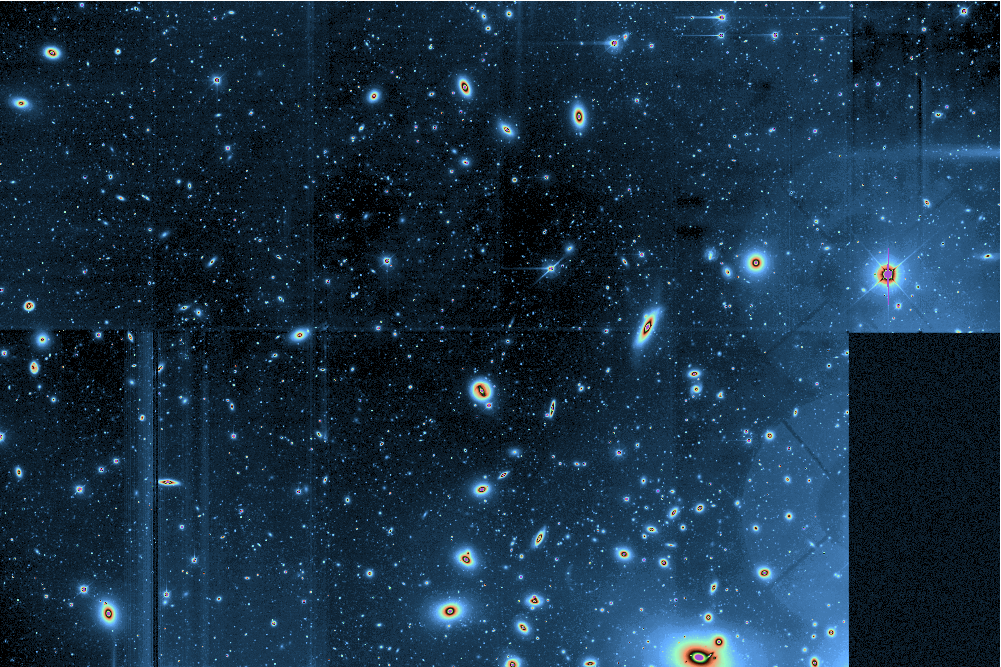
|
An image of the Coma Cluster, click here to see it larger. Or click here to see the Abell 1185 cluster, as imaged by the central area of the CFH12k camera. |
WFI -
The 8k8k mosaic imager of the 2.2 m ESO telescope
The Abell 496 cluster observed during the WFI commissioning (photo credit:
ESO). The WFI camera was founded by the OAC observatory, which suggested
a few targets for the WFI commissioning, among which the Abell 496 cluster.
The image reduction is, since a too long time, in progress.
Near-Infrared Mosaics
In the near-infrared mosaics are quite rare (I'm aware only of the McMahon camera). Therefore, in order to get a large sky area one is forced to observe bits of it, and then to recompose the puzzle. The next figure is an effort made by taking a few thousand images and then put the pieces one near the other. The field of view is about 20'x24', made of 2'x2' images taken with Moicam at 2m telescope of Pic du Midi.
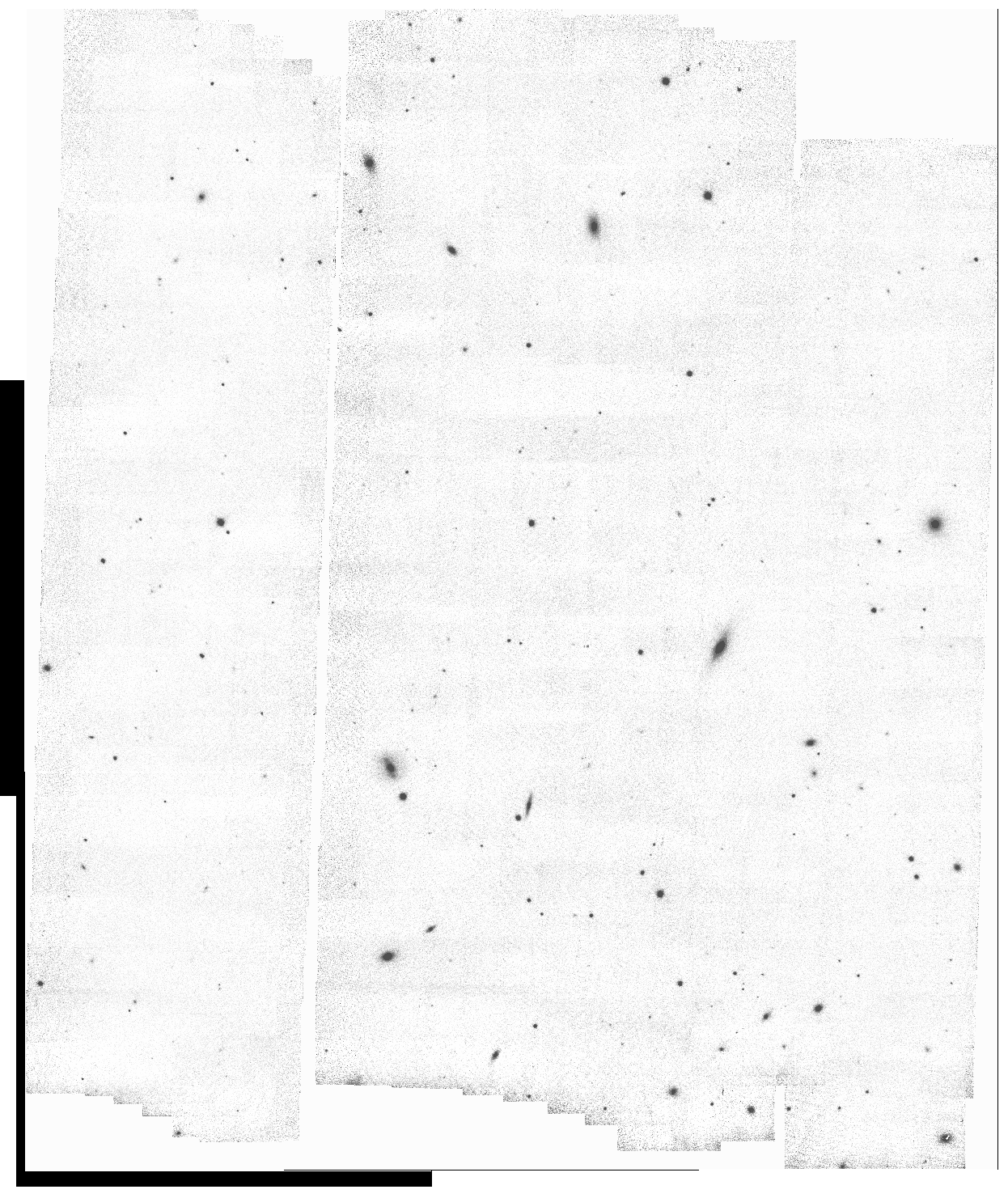
How to do all that stuff?
| Task | Optical wide-field images | Near-infrared images |
| where/what is that file? | myOrganizer | myOrganizer |
| overscan/reset correction | Flips v0 | MIDAS+script |
| dark correction | Flips | - |
| flat fielding | Flips | eclipse |
| fringe removal | Flips | - |
| background removal | Midas/SEx+script | eclipse |
| illumination correction | SEx+smongo+script | Midas+script+C+eclipse |
| cosmic ray flagging | Midas+script | Midas+script |
| photometric calibration | smongo | smongo |
| astrometry | Astrometrix (courtesy of Mario Radovich) | Eclipse (relative astrometry) |
| compositing | Swarp (large dithers) or imcombine (small dithers) + script | imcombine (small dithers) + script |
| catalog creation | SEx or NExt +script | SEx +script |
A comment.
To reduce the data taken at the second run of any of the listed instrument
takes as much days as the number of nights at the telescope you use to take
them, provided you have a fast computer and the good software ....
Forget such a performance for your first run data: all observatories have
their idiosyncrasies that make you crazy ... as long as you find why programs
crash. And the observer always did something unperfect.